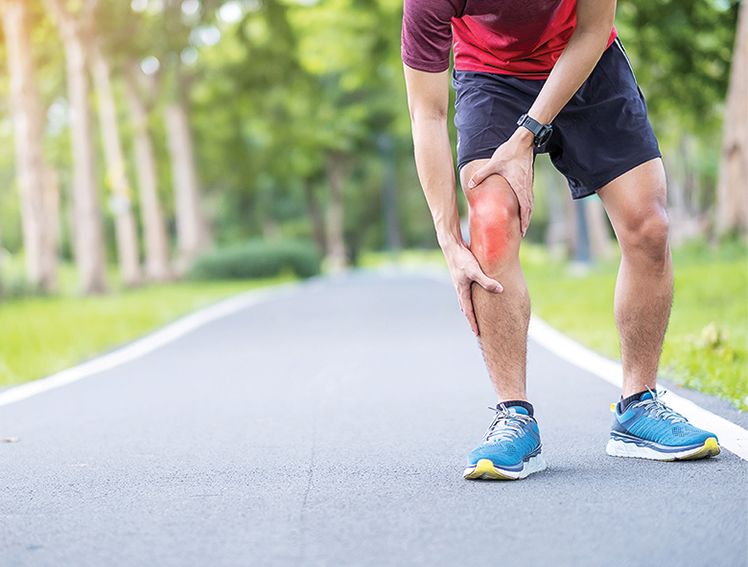
Life After Total Knee Replacement: What to Expect
Introduction
Undergoing total knee replacement surgery is a big step toward relieving chronic knee pain and improving your ability to move around. While recovery might seem intimidating, knowing what to expect can make the process smoother. In this article, we’ll walk you through what life is like after a total knee replacement, including what happens in the first few days after surgery, the rehabilitation process, and some tips for a successful recovery.
The First Few Days After Surgery
Right after your total knee replacement, you'll stay in the hospital for a few days so your recovery can be closely monitored. It's normal to feel some pain and discomfort as your body gets used to the changes made during surgery. Your doctor and nurses will help manage the pain to keep you comfortable.[1]
In the first few days, you'll start moving your knee, even though it might feel difficult. Moving your knee, even a little, is important to prevent stiffness and help the healing process.
Returning Home: The First Few Weeks
After leaving the hospital, you’ll continue your recovery at home. The first few weeks are really important for your healing. You may need help with everyday tasks like cooking, cleaning, and even getting in and out of bed.[2]
It’s important to keep your knee elevated and follow your doctor’s instructions on resting it. Most people use crutches or a walker during this time to avoid putting weight on the knee and to reduce the risk of falling. Swelling and bruising are common after surgery, but don’t worry—they should gradually go down as you heal.
Physical Therapy and Rehabilitation
Physical therapy plays a key role in recovery after total knee replacement. It focuses on strengthening the muscles around the knee and improving flexibility. Initially, the exercises are simple, but they become more challenging as healing progresses. Sticking to your physical therapy plan is essential for regaining strength, mobility, and function. Missing sessions can slow your recovery, so it’s important to stay committed to the process for the best results.
Resuming Daily Activities
After the initial recovery phase of total knee replacement, you can gradually resume everyday tasks like walking, climbing stairs, and even returning to work, depending on your job. It’s important to pace yourself and listen to your body. While many people return to routine activities within 3 to 6 weeks, more strenuous exercises or sports may take longer. Always consult your doctor before taking on activities that may stress your knee to avoid setbacks in your recovery.[3]
Long-Term Outcomes
The results of total knee replacement can be life-changing. Many people experience a significant reduction in pain and improved mobility, allowing them to return to activities they once enjoyed. However, it’s important to have realistic expectations. Full recovery can take anywhere from 6 months to a year, and some people may continue to feel mild discomfort as they adjust to their new knee.
The new knee joint is built to last for many years, and with proper care, it can serve you well for 15 to 20 years or longer[4] Regular checkups with your doctor will help ensure everything is progressing as expected.
Challenges and How to Overcome Them
While recovery after total knee replacement is generally positive, it’s not without its challenges. Some people experience temporary stiffness, pain, or difficulty walking. These issues are often temporary and improve with time, rest, and physical therapy.
In some cases, you might also experience anxiety or frustration as you adjust to your new knee. It’s important to have patience and focus on the gradual improvements you’re making. If you ever feel overwhelmed or uncertain, talk to your doctor or a counsellor for support.
Tips for a Successful Recovery
To ensure a smooth and successful recovery after your total knee replacement, here are some key tips:
Follow your doctor’s instructions carefully. Stick to your recovery plan, including taking medications, resting, and attending physical therapy.
Stay active, but don’t overdo it. Gradually increase your activity level as your knee improves, but avoid pushing yourself too hard, too soon.
Stay positive. Recovery can be a slow process, but staying motivated and focused on the long-term benefits will help you through tough days.
Eat healthily and stay hydrated. A balanced diet can promote healing and give you the energy you need during recovery.
When to Contact Your Doctor
While most of the recovery process after total knee replacement goes smoothly, there are certain signs that you should contact your doctor. If you experience severe pain, sudden swelling, fever, or redness around the surgical site, it may be a sign of an infection or other complication. Early intervention can help prevent further issues.
DESTIKNEE by Meril
Destiknee is a modern knee implant designed for people with severe arthritis or joint damage. It’s made from special materials that allow for smooth movement and comfort after surgery. The implant helps reduce pain and improves knee function, making everyday activities like sitting, kneeling, and walking easier. Destiknee is ideal for those looking to regain mobility and stay active after knee replacement surgery.
Conclusion
Life after total knee replacement can be incredibly rewarding, with a significant reduction in pain and improvement in mobility. While the recovery process can take time, following your doctor’s advice, attending physical therapy, and maintaining a positive attitude can help you get back to your regular activities.



